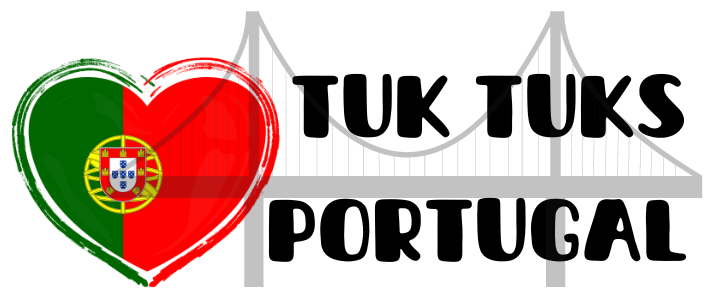Faro’s Historical Old Town: A Step Back in Time
Faro’s Old Town is a captivating destination that takes visitors on a journey through time. Steeped in history and filled with architectural wonders, this ancient city offers a glimpse into the past. From its origins to the preservation efforts of today, Faro’s Old Town is a treasure trove of historical significance.
A Brief History of Faro’s Old Town
Faro has a rich history that dates back centuries. The city was founded by the Romans in the 1st century AD and was originally known as Ossonoba. Over the years, Faro has been influenced by various civilizations, including the Moors and the Christians. These influences can be seen in the architecture and culture of the Old Town.
The Origins of Faro
The Roman settlement of Ossonoba played a crucial role in the region’s development. It served as an important port and trade center, attracting merchants from all over the Mediterranean. The city flourished under Roman rule and continued to thrive even after the fall of the Roman Empire.
Historical Influences on Faro’s Architecture
The architectural style of Faro’s Old Town is a testament to its diverse history. The Moors, who occupied the region for several centuries, left their mark on the city with the construction of defensive walls and the Arab-style arches seen in various buildings. The Christian influence can be seen in the Gothic and Renaissance elements of structures like the Se Cathedral.
Faro’s Old Town Today
Today, Faro’s Old Town is a charming district that attracts tourists from all over the world. The narrow cobblestone streets, whitewashed houses, and picturesque squares create a unique atmosphere that transports visitors back in time. The Old Town is also home to numerous cultural sites, museums, and traditional shops, offering a glimpse into the city’s past.
Explore the Wonders of Faro’s Old Town
Must-Visit Landmarks
Arco da Vila
The Arco da Vila, or the Arch of the Town, is one of the most iconic landmarks in Faro’s Old Town. It was built in the 19th century and serves as the entrance to the historic district. The arch features intricate carvings and offers a stunning view of the surrounding area.
Se Cathedral
The Se Cathedral is a magnificent example of Gothic architecture. Built in the 13th century, it is one of the oldest cathedrals in Portugal. The cathedral boasts stunning stained glass windows, intricate sculptures, and a beautiful cloister.
Palacio de Estoi
The Palacio de Estoi is a neoclassical palace located just outside Faro’s Old Town. Built in the 19th century, the palace is surrounded by beautiful gardens and features stunning frescoes and ornate interiors. It is a must-visit for architecture and history enthusiasts.
Best Places to Eat in Faro’s Old Town
Local Cuisine
Faro’s Old Town is known for its delicious traditional cuisine. From fresh seafood dishes to hearty stews, visitors can indulge in a variety of local delicacies. Some popular dishes include grilled sardines, cataplana (a seafood stew), and pastel de nata (a custard tart).
Modern Dining
For those seeking a more contemporary dining experience, Faro’s Old Town offers a range of modern restaurants and cafes. These establishments serve international cuisine with a twist, combining traditional flavors with innovative techniques.
Walking Tours in Faro’s Old Town
Exploring Faro’s Old Town on foot is the best way to truly immerse yourself in its history and charm. Several walking tours are available, led by knowledgeable guides who will take you through the winding streets and share fascinating stories about the city’s past. These tours often include visits to historical sites, museums, and hidden gems that you might otherwise miss.
Preserving the History of Faro’s Old Town
Historic Preservation and Restoration Efforts
The preservation of Faro’s Old Town is a priority for the local government and organizations. Restoration projects are regularly carried out to maintain the authenticity of the buildings and protect them from decay. Many historic structures in the Old Town have been carefully restored, ensuring that their unique architectural features are preserved for future generations.
Faro’s Old Town in the Modern Era
While Faro’s Old Town is steeped in history, it also embraces modernity. The district is a vibrant hub of cultural activity, hosting festivals, art exhibitions, and live performances throughout the year. It strikes a perfect balance between preserving its heritage and embracing the present.
Plan Your Visit to Faro’s Historical Old Town
When to Visit Faro
Faro’s Old Town can be visited year-round, but the best time to explore is during the spring and autumn months when the weather is pleasant and the crowds are smaller. Summers can be hot and crowded, while winters are mild and offer a quieter atmosphere.
Getting Around Faro’s Old Town
Faro’s Old Town is compact and easily accessible on foot. The narrow streets are not suitable for cars, so walking or cycling is the best way to get around. There are also local buses and taxis available for longer distances.
Tips for Experiencing Faro’s Rich History
To make the most of your visit to Faro’s Old Town, consider the following tips:
- Take your time to explore the hidden corners and alleys of the Old Town.
- Visit the museums and cultural sites to learn more about Faro’s history.
- Try the local cuisine and indulge in traditional dishes.
- Join a guided tour to gain deeper insights into the city’s past.
- Take a boat trip to explore the nearby Ria Formosa Natural Park.
By following these tips, you’ll be able to fully immerse yourself in the rich history and culture of Faro’s Old Town.
